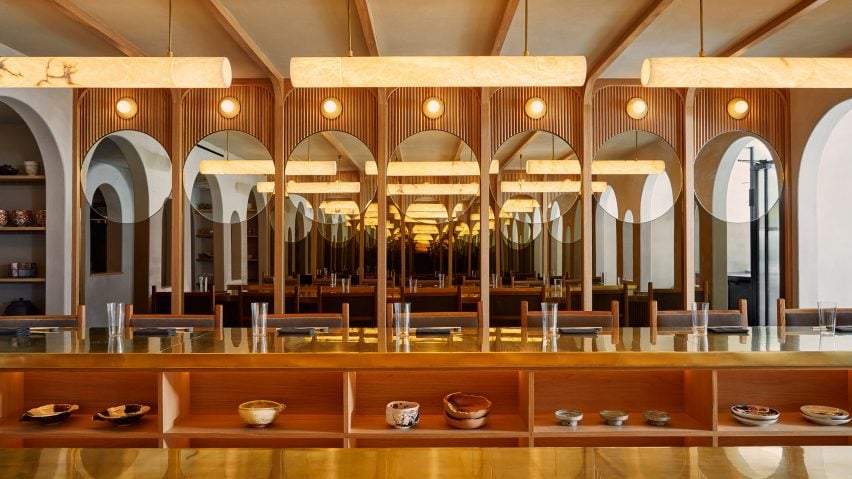
Lunar festival informed Studio Tack's design of Tsukimi restaurant in New York
Brooklyn firm Studio Tack has used white oak panelling, antiqued glass mirrors and alabaster lights to create a classy yet cosy atmosphere in this small Japanese restaurant in New York City.
Tsukimi offers a modern take on kaiseki, a type of Japanese haute cuisine involving multiple courses that are meticulously prepared and presented. The practice of kaiseki goes back hundreds of years.
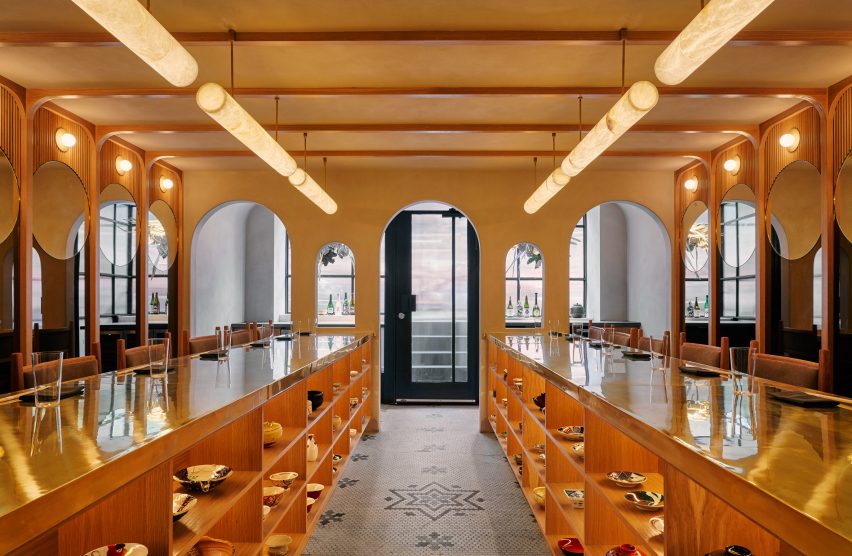
The restaurant's name means "moon viewing" – a reference to a fall harvest festival that takes place on the night of a full moon.
The lunar event is often celebrated at home with family and friends. Its themes of "contemplation, gratitude and togetherness" provided the cues for Studio Tack's design.
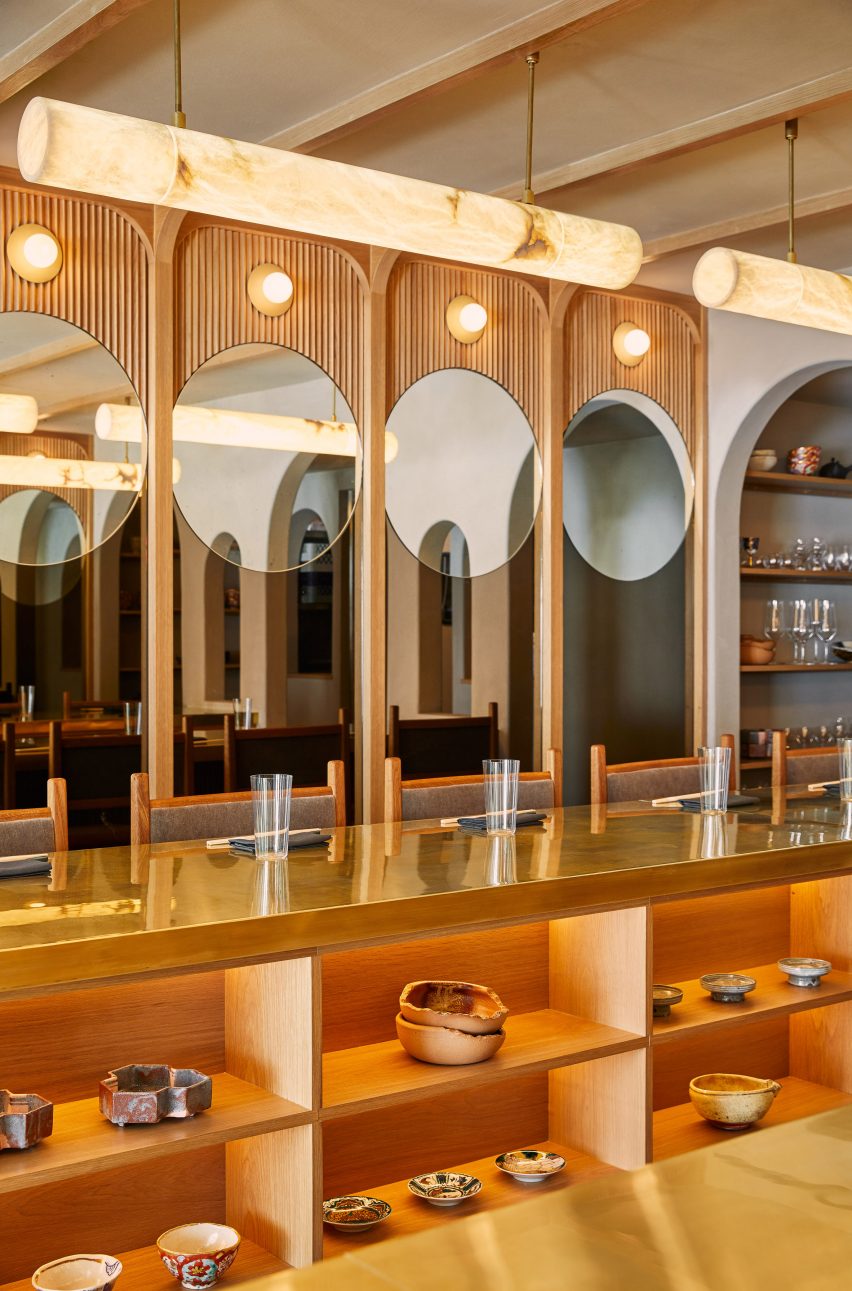
Measuring 660 square feet (61 square metres), the eatery occupies the ground level of a multi-storey, brick building in Manhattan's East Village neighbourhood.
Tsukimi's chef, Takanori Akiyama, worked in the same space years ago, for a restaurant that was shuttered in 2016. The facade is lined with corduroy glass, offering a blurred view of the activities unfolding within.
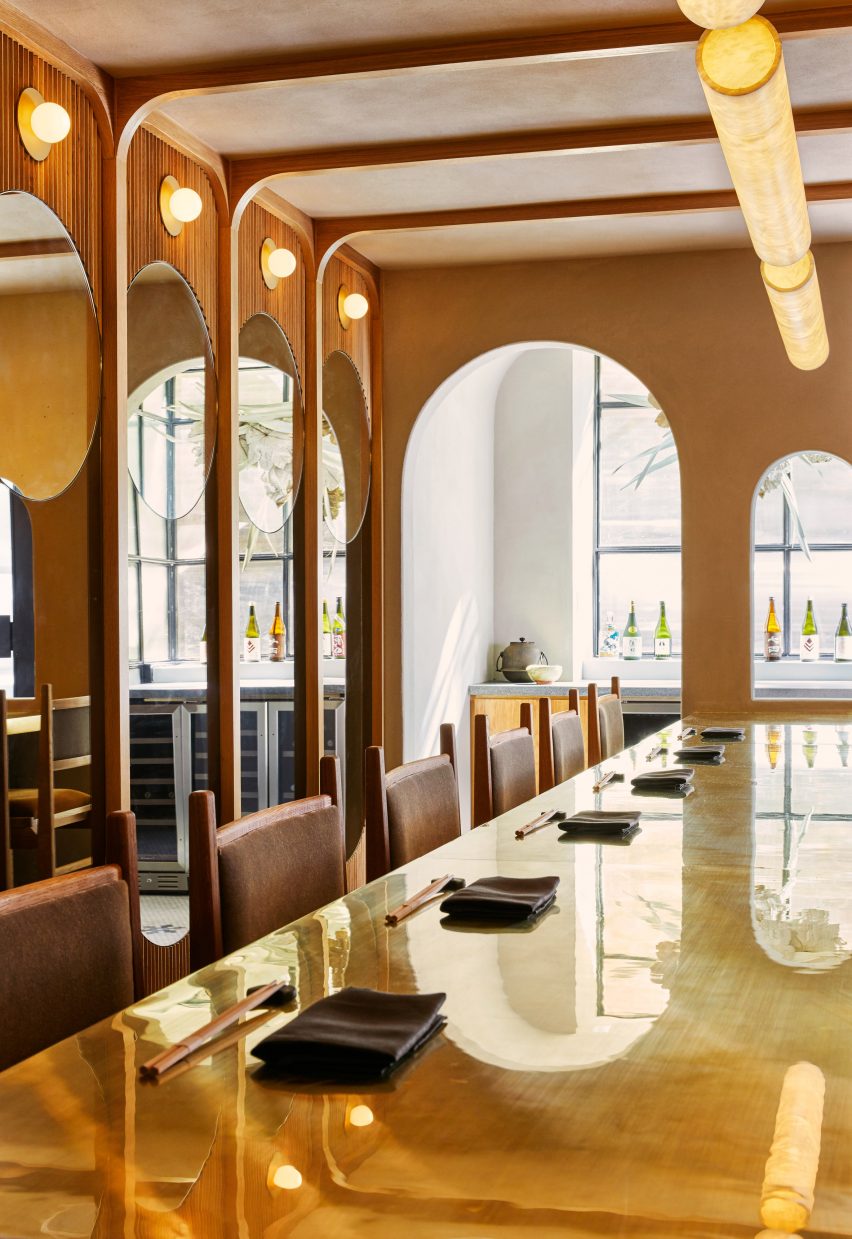
Visitors step into a small entry vestibule with clusters of hanging, dried pampas grass – a traditional harvest plant. Arched openings lead into a narrow, linear room filled with golden light and wooden finishes.
The use of textures and patterns are meant to evoke the disciplined flow of kaiseki.
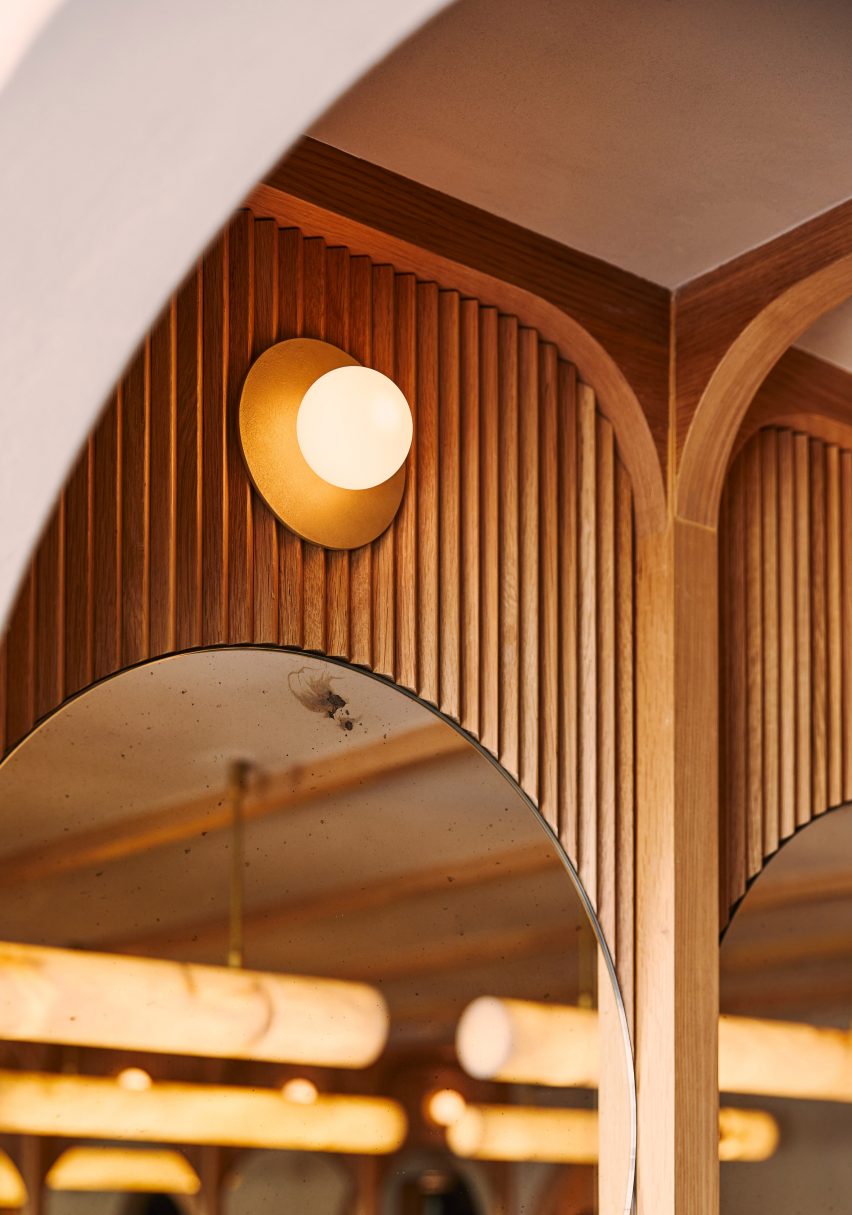
For the walls, the team used hand-rendered plaster and ribbed wooden panels. Large mirrors made of antiqued and bronzed glass help make the compact space feel more expansive.
Classic mosaic flooring dating back to the 1920s was left in place, providing a connection to the building's history.
"Though the floor is a little worn, and showing its age, it is the very same floor Chef Akiyama walked on when he worked here years ago," Studio Tack told Dezeen. "We felt a line of continuity between old and new was important."
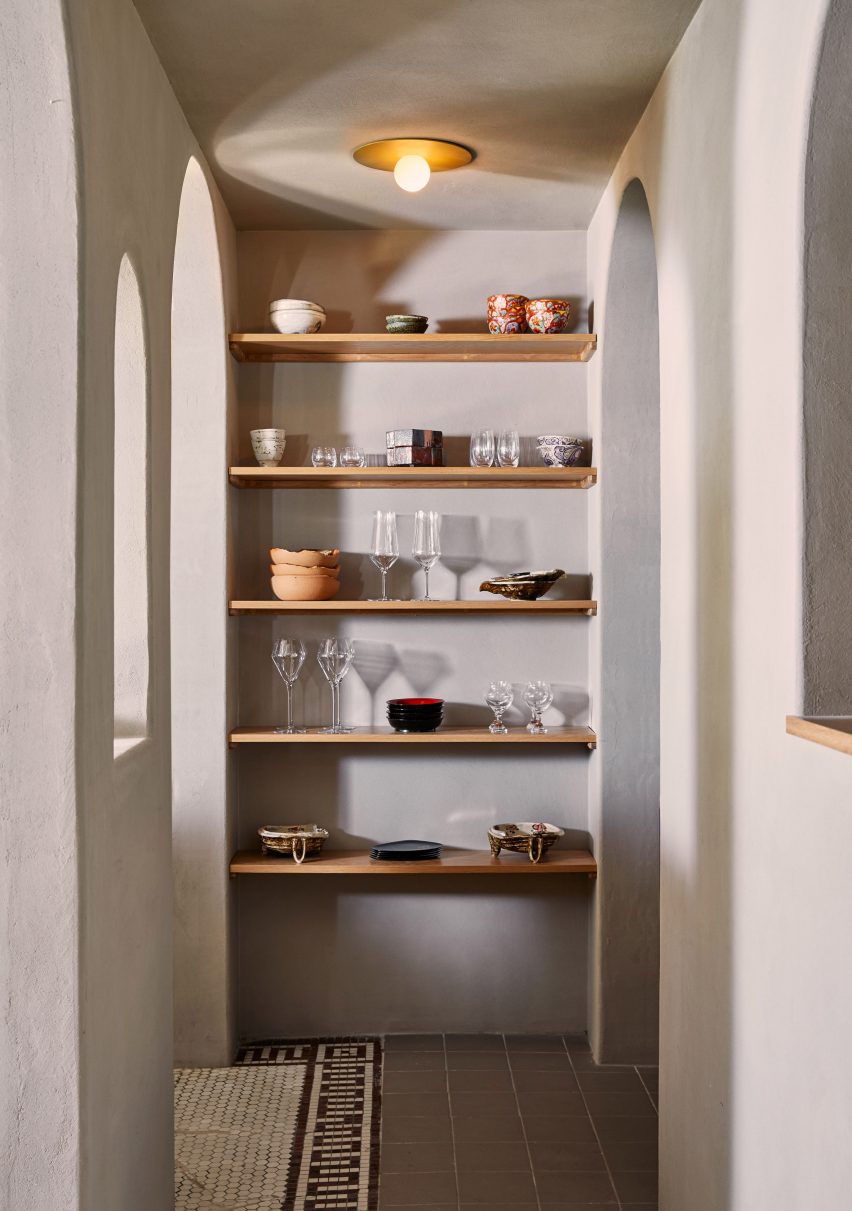
There are no dining tables. Instead, guests sit at one of two counters in the centre of the restaurant, with a service corridor running between them. The white oak counters are topped with unlacquered brass that will develop a patina over time.
Ladderback chairs by Jason Roskey of Fern line the counters. The custom seating is designed to prevent guests from getting fatigued during their 11-course meal.
"The seat pads and backrest are made from the same kind of automotive foam you'd find in a car seat, and upholstered in a Maharam mohair," the designers said.
Built into the counters are niches for carefully selected dishware, which rotates seasonally. The collection includes ceramic pieces by Japanese artist Hitori Wada and Brooklyn-based artist Minami Takahashi, along with special lacquerware and glassware from Japan.
Vintage pieces collected by the chef and general manager Karen Lin are also featured.
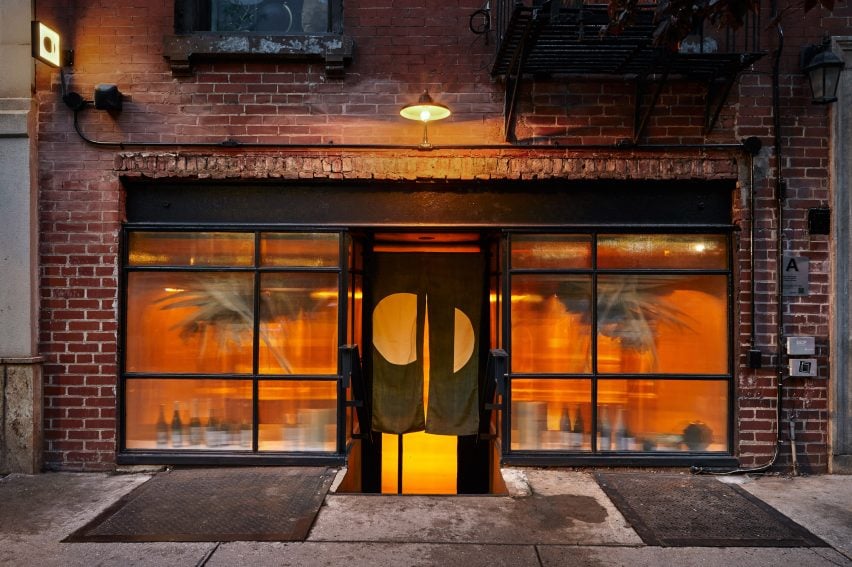
A series of tubular lights are suspended overhead. Made of alabaster, the pendants are from Atelier Alain Ellouz in France. The space also features brass-and-frosted glass wall sconces from Allied Maker in New York.
"The lighting is designed to be viewed in the same way the Japanese approach the moon viewing during Tsukimi – that is, indirectly, by looking at its reflection in water or its diffusion of light across the landscape," the team said.
The lighting contributes to the overall ambiance, which is meant to help guests unwind and embrace the kaiseki experience.
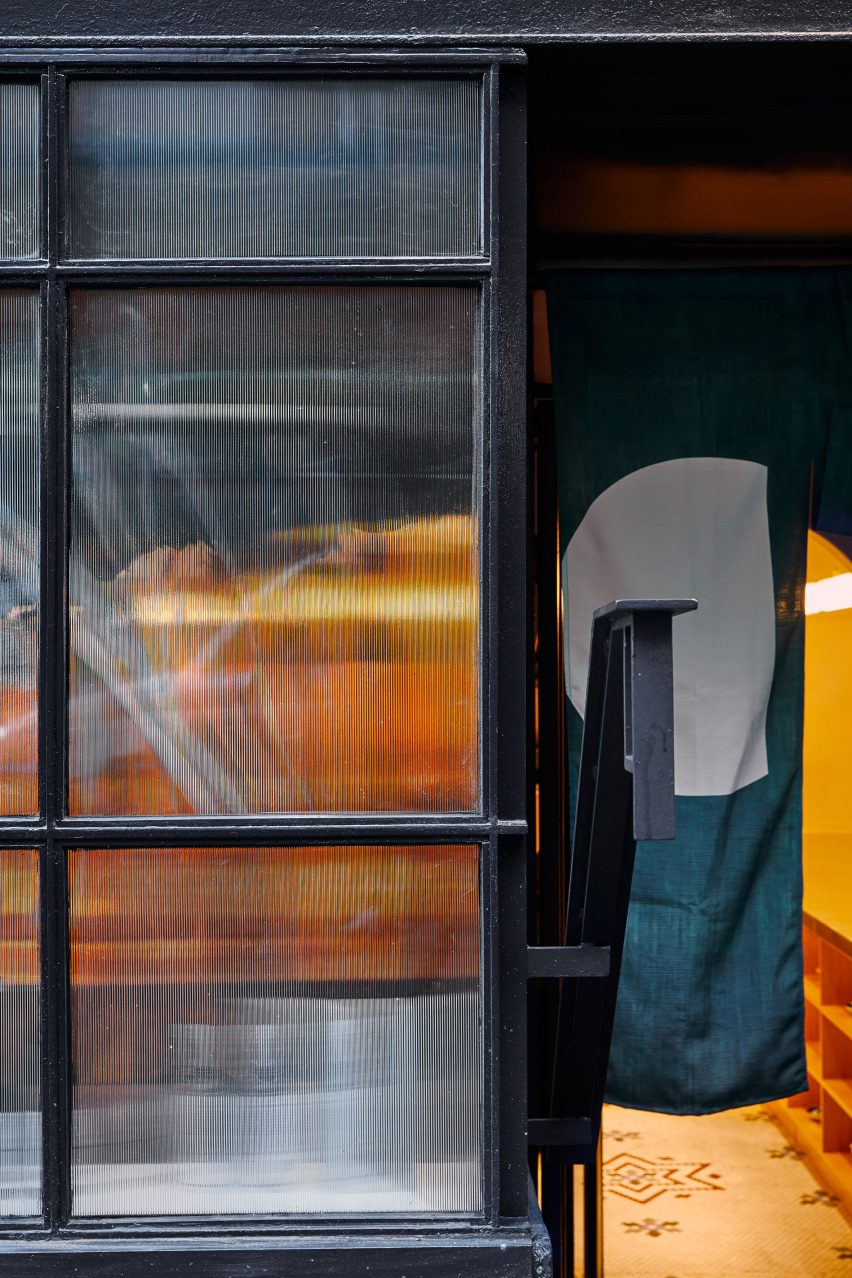
"While the design is certainly inspired by Japanese interiors, it is reinterpreted here to avoid indulging in the cliche," the team said. "The design of Tsukimi aids in slowing the mind down, creating an atmosphere that is elegant and finished, yet relaxed and comforting."
Other New York restaurants offering Asian cuisine include a ramen eatery by Carpenter & Mason that features indigo-coloured finishes and decor, and a Chinese noodle shop by New Practice Studio that has walls and ceilings wrapped in curved slats of laminated wood.
Photography is by Read McKendree.